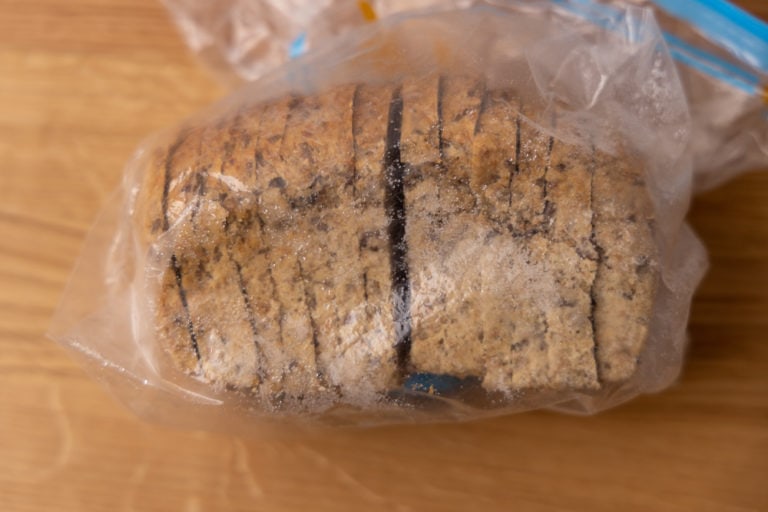Can You Freeze Pumpkin Pie? (Before & After Pics)
Here’s whether you should freeze pumpkin pie or not, what to expect from frozen pumpkin pie, and how to go about it to get the best results.
So you have some leftover pumpkin pie that you can’t eat within a couple of days, and you don’t want it to go bad.
Freezing seems like the perfect answer, but you’re not sure if you can successfully freeze the pie.
Or you’re thinking about baking two pumpkin pies, but you want first to make sure that freezing the second one is a valid option.
Fortunately, I have good news.
You can freeze pumpkin pie, and it freezes well. Wrap the pie tightly with plastic wrap or aluminum foil and place it in a freezer bag or container. It should retain good quality for at least three months in the freezer.
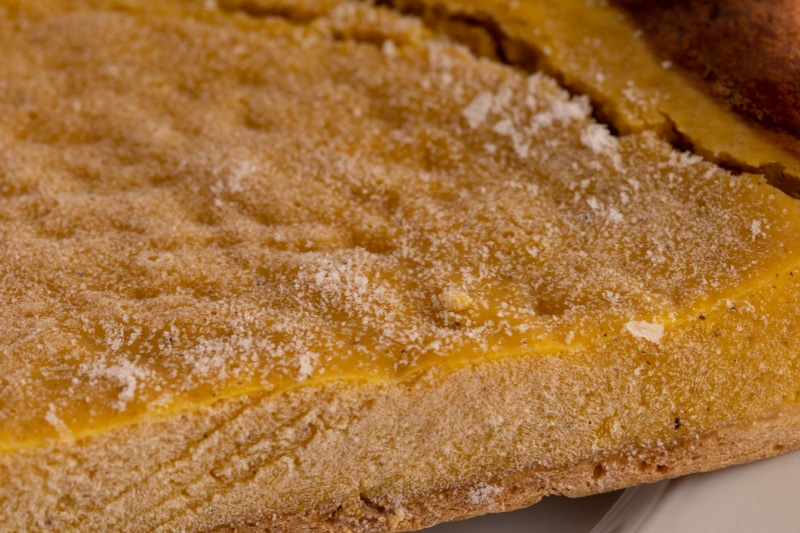
That’s the short version.
Interested in learning more about freezing pumpkin pie? Read on.
How to Freeze Pumpkin Pie
Here’s how you freeze pumpkin pie:
- Let the pie cool completely if it’s homemade. Make sure that doesn’t take longer than two hours, for safety reasons I discussed in my article on storing pumpkin pie.
- Wrap the pie tightly with plastic wrap or aluminum foil. If you plan on freezing it for more than a couple of days, place the wrapped pie in a freezer bag or airtight container for additional protection. Label the bag if you find it useful.
- Freeze everything.
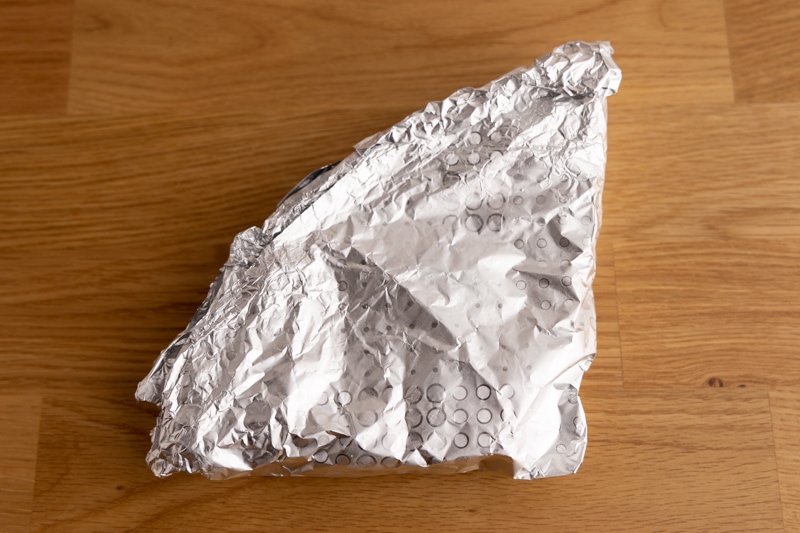
That’s it; the whole process shouldn’t take more than a couple of minutes.
And after a couple of hours, your pumpkin pie should be frozen and look something like this:
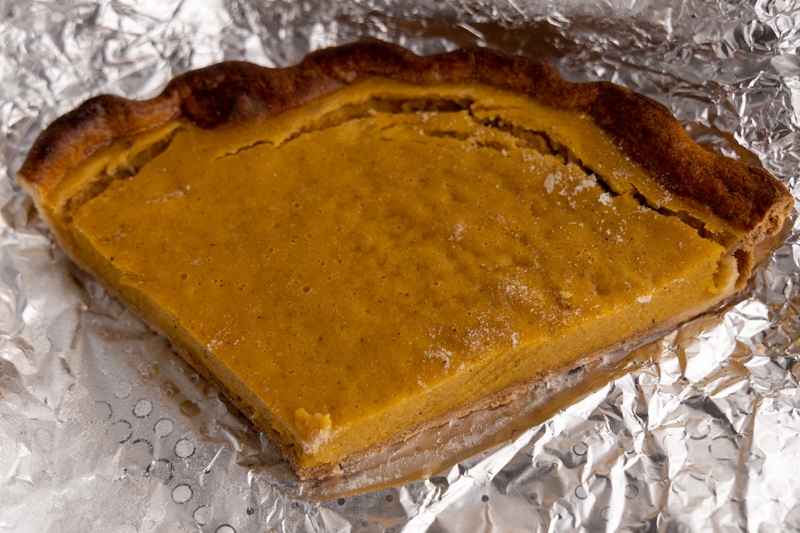
Now, let’s talk about how you can adjust the process to fit your needs best.
If you have too much pumpkin puree on hand but not enough time to bake the pie, you can freeze pumpkin puree instead. You can also freeze leftover pumpkin pie filling if needed.
Tips on Freezing Pumpkin Pie
Freeze in Portions
If you need to freeze a whole pumpkin pie, consider cutting it into a few portions. Each one shouldn’t be larger than what you can consume in 1 to 2 days.
After dividing the pie, wrap each portion separately, and place them in a single bag or container or each one separately. Whatever works for you.
Portioning is also super important if you bought a too big pumpkin and you’re freezing it diced without pre-freezing.
Freezer Bags vs. Containers
While freezer bags better protect pumpkin pie from freezer burn than containers, both are good options for the second layer of protection.
If your freezer is loaded with food, and you’re worried that your pumpkin pie will get squashed, freeze it in a container. You can always transfer the pie to a bag once it’s frozen solid.
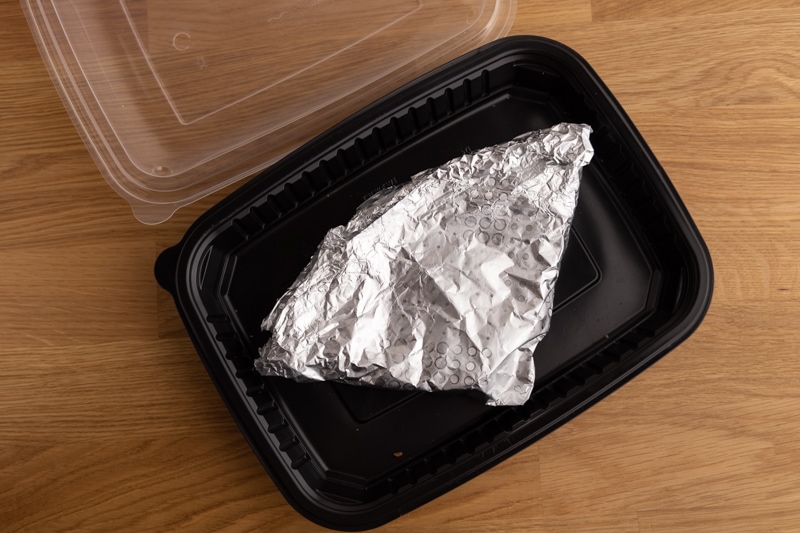
How Long Can You Freeze Pumpkin Pie?
Defrost and eat frozen pumpkin pie within 3 months for the best quality.
Of course, the 3-month period is only a rough estimate, and the pie should taste great even if it’s frozen for an extra couple of weeks.
As usual, the longer the pie sits in the freezer, the worse its quality, so the sooner you get to it, the better.
For me, I try to use most foods that I freeze within a month, as they’re still top of mind. When they get buried and forgotten, they’re likely to sit in the freezer for months until I stumble upon them when looking for something else.
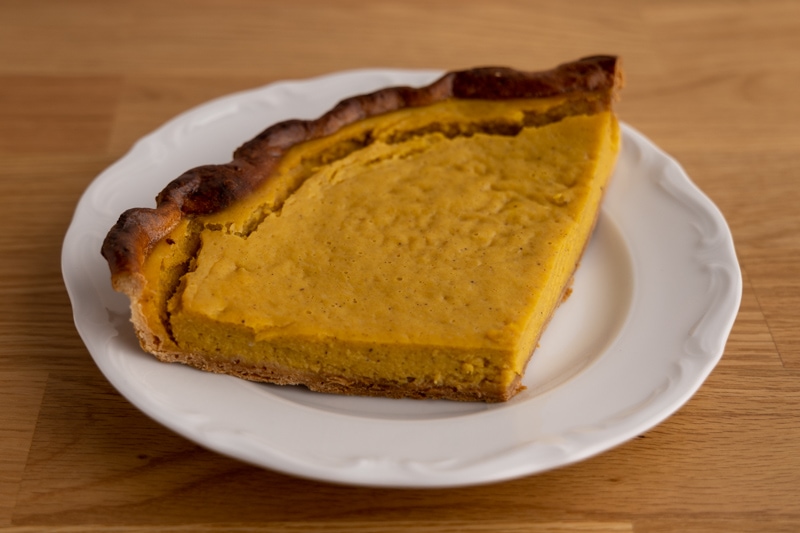
How to Defrost Pumpkin Pie?
The easiest way to defrost frozen pumpkin pie is to place it in the fridge the night before you need it. It should be nice and thawed in the morning.
Defrosting the pie by warming it up (e.g., in a microwave) isn’t a good idea because we want the pumpkin pie to stay cold, just not frozen anymore.
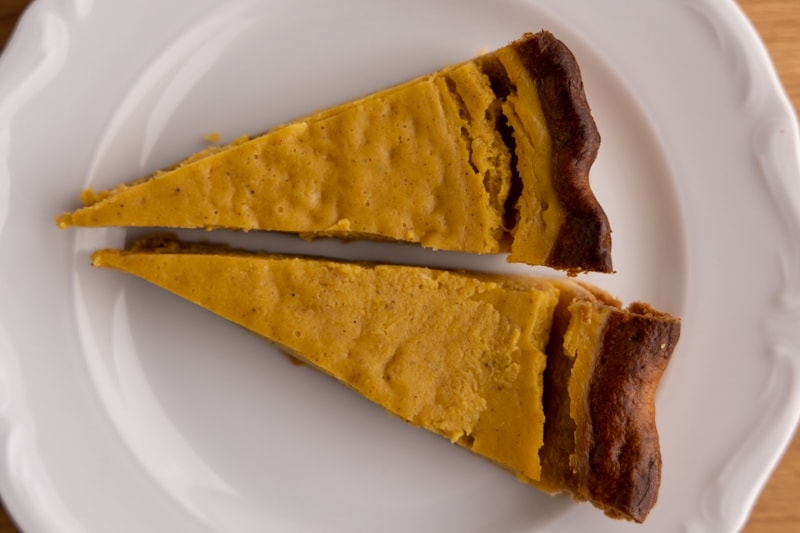
Rotten Records: Share Your Snap!
Caught some food past its prime? Upload your photo to “Rotten Records” and help others spot the signs of spoilage. Every image makes our food community safer and more informed!
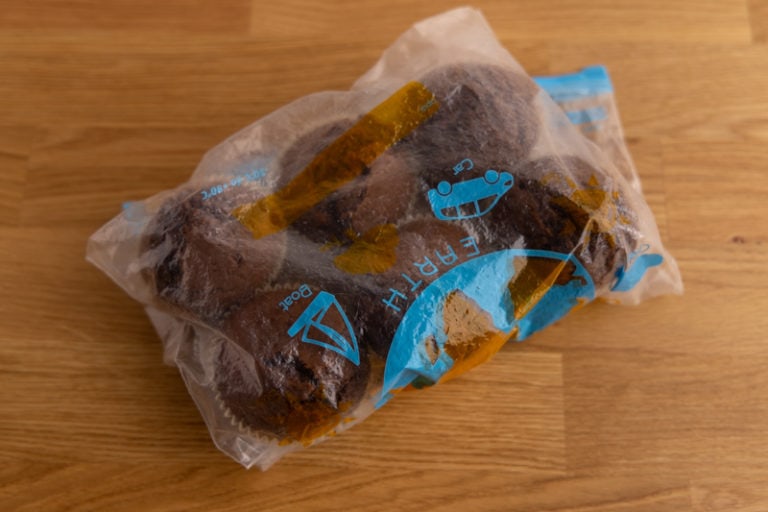
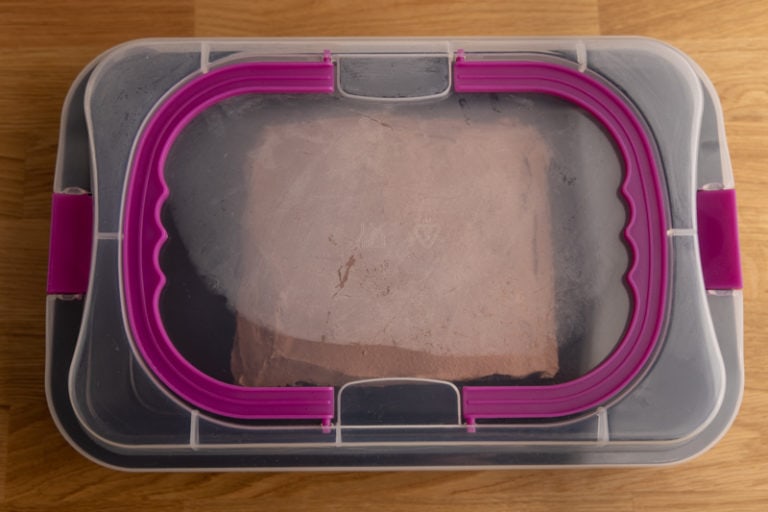
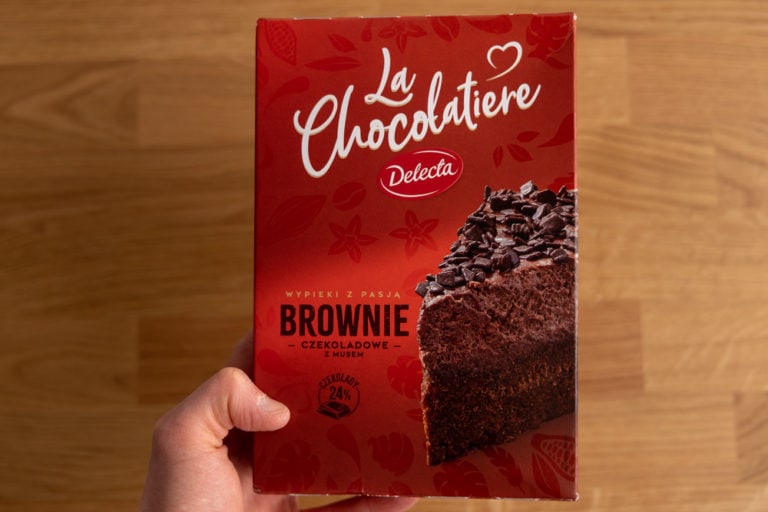
![Does Sugar Go Bad? [Shelf Life, Storage, and Expiration]](https://www.doesitgobad.com/wp-content/uploads/Sugar.jpg)
![Does Cocoa Powder Go Bad? [Shelf Life and Expiration]](https://www.doesitgobad.com/wp-content/uploads/cocoa-powder.jpg)
